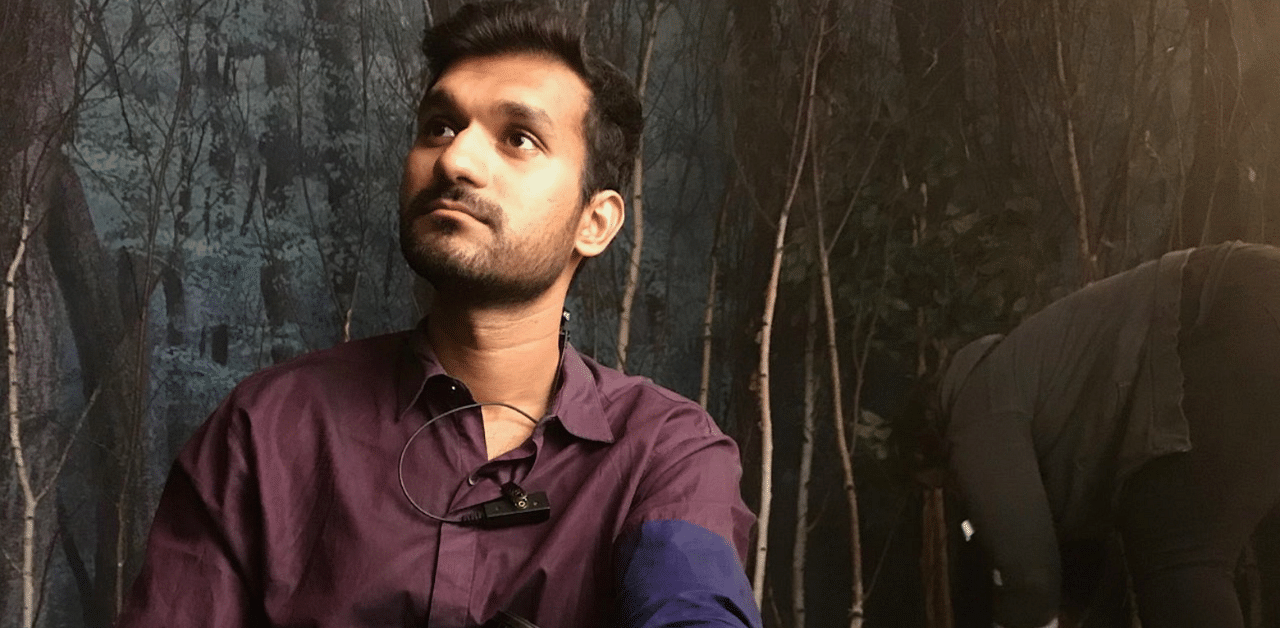
Lensman Aakash Raj, best known for his work on the feature film Teen Aur Aadha, says that cinematography is a ‘hidden’ art in India even though cinematographers play a major role in conceptualising a movie. He also opens up about his professional journey and reveals that his childhood obsession with sketching gods and goddesses encouraged him to enter the film industry.
(Edited excerpts from an e-mail interview with DH)
How was the experience of working on Teen Aur Aadha?
Teen Aur Aadha has a very unique story with many layers. It was important to (visually) keep it subtle but effective at the same time. It was the story of one house in three different eras. As the walls are always standing there and they see everything without blinking we decided to shoot each story in a single shot. There were a lot of moving parts in the films with a lot of actors and camera movement so everything needed to be rehearsed several times.
For each shot, we spent four days prepping and rehearsing and then the fifth day to shoot one shot. It was not a traditional way of shooting and the crew had to get used to this unique storytelling style. We had very good actors who were very experienced and never missed out on any details that we rehearsed. Overall, this was a very collaborative effort.
Do you feel Cinematographers get due recognition in India?
I think the cinematography is still a very hidden art form. Cinematographers here are very talented, responsible and a major part of conceptualising, visualising and executing the film. Producers and directors rely on our experience to execute the story effectively and we play a critical role in accomplishing it. However, people hardly know the person behind the camera.
To what extent is the distinction between commercial and non-commercial cinema justified?
I think there should not be different categories like commercial and non- commercial cinema. If it is commercial, then it’s not cinema. What we should work on is commercialising cinema or art. Selling something through visual and sound is directly related to the commercial (side) but it’s not necessarily cinema; you can definitely be artistic while creating those commercials for a successful promotion of the brand. We need to revolutionise our stories so that they are relatable to a vast section of the audience and still maintain the artistic values and sophistication. It has been done in the past but sadly we don’t see that happening often. One of the greatest examples is the film Lagaan where the filmmakers narrate a complex and effective story with a high level of sophistication and still keep it relatable to the mass audience.
Quite a few of your works have been featured at international film festivals. How was the experience? Any takeaways?
Visiting international film festivals has been the most educating process. I think our films are appreciated in the international market and we should represent them and our culture. Diversity and inclusion are increasing in international storytelling so there are a lot of opportunities for Indian filmmakers. Film festivals are the networking ground for freelance filmmakers. Moreover, it is very fascinating to see what kind of films are being made all around the world. It is also a very good place to get introduced to new techniques used by filmmakers across the world.
How did you get interested in cinematography?
I was an introvert as a kid. Most of the time, I would sketch different things, especially Indian mythological gods and goddesses. I was highly influenced by shows playing on the Discovery and National Geographic, which made me take a liking to nature. I always knew I had to pursue art as a career and being in films was a perfect combination of art, craft and traveling. I was introduced to the craft of film making right after high school, where I started learning film editing. The editing course gave me a great understanding of how the movie comes together, but I was never satisfied with the editing process. My childhood inclination towards drawing images attracted me towards cinematography. When I got familiar with the art and craft of cinematography I realised that it was the most suitable way for me to express my thoughts.
How are you keeping yourself busy amid the Covid-19 pandemic?
Covid has changed everyone’s life. When it started it was sort of a shock as all my projects were being moved or canceled. We were asked to stay at home. Knowing that no one was working eased the pressure of being ahead (on top of) of the game. This was a much-needed break for me. I spent my first few months doing mediation, yoga, weight training and cooking. I also watched movies, which I missed and updated myself on the work of the filmmakers that I like. I spent a lot of time bringing myself up to date with technological innovations.